Volume 43 Number 4 (2012.12)
Special Feature
Vehicle Engineering
Part I. Special Feature
Overview
Research Reports
-
pages 1-10
Eiichi Ono, Yoshikazu Hattori, Hiroaki Aizawa, Hiroaki Kato, Shinichi Tagawa and Satoru Niwa
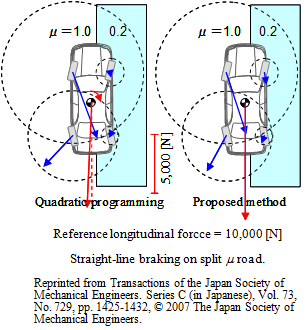
In this article, a vehicle dynamics integrated control algorithm using an on-line nonlinear optimization method is proposed for 4-wheel distributed steering and 4-wheel distributed traction/braking systems. The convexity of this problem is shown, and so global optimality of the convergent solution of the recursive algorithm is guaranteed. This implies that the theoretical limited performance of vehicle dynamics integrated control is clarified. -
pages 11-18
Masami Iwamoto and Yuko Nakahira
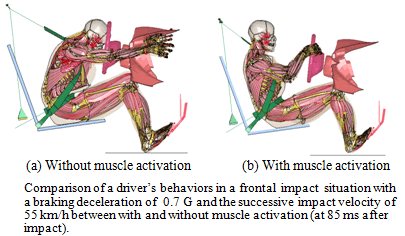
We have developed an active human FE model with 3D geometry of muscles for simulating occupant bracing and evasive maneuvers in pre-crash. The developed model is a unique and practical tool for the detailed investigation on effects of muscle activation in pre-crash for occupant behaviors and injuries under various impact situations.
-
4. Four-wheel Active Steering Control Based on Human Sensitivity
 (1,454kB)
(1,454kB)pages 19-31
Yoshikazu Hattori, Eiichi Ono, Katsuhiko Fukui and Yuji Muragishi
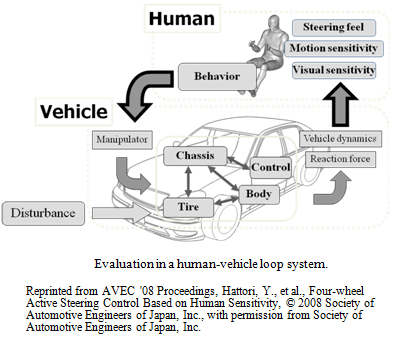
Target vehicle dynamics to enhance a driver’s perception of a vehicle’s agility and stability in yaw and lateral motion have been suggested. Human sensitivity is a significant factor in determining such targets. This paper proposes a control design concept for a four-wheel active steering system based on four representative human sensitivities.
-
5. Numerical Simulations of Aeroacoustic Fields around Automobiles
 (1,492kB)
(1,492kB)pages 33-45
Yoshihiro Kato
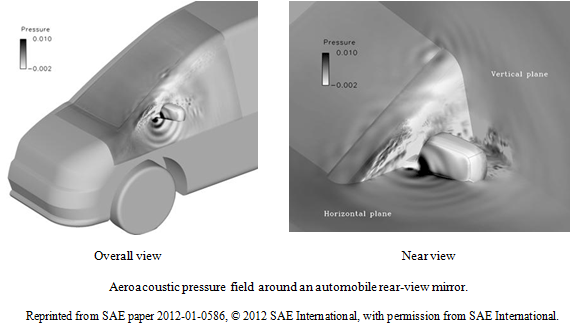
A numerical method for simulating the wind noise around automobile A-pillars and rear-view mirrors has been developed. The equations separated from the compressible flow equations are defined as the governing equations for acoustics by means of the Mach number expansion. The acoustic fields are calculated by the finite volume method with a non-oscillatory and higher-order discretization scheme, that is, the WENO scheme. From the results around the automobile A-pillars and mirrors, the present method makes it possible to visualize the acoustic fields directly and shows how the wind noise is generated and propagated.
-
6. Study on Roller Behavior and Thrust Force of Tripod Constant Velocity Joint
 (1,467kB)
(1,467kB)pages 47-57
Hideki Sugiura, Yoshiteru Mizutani , Tsugiharu Matsunaga, Yosei Ando and Isashi Kashiwagi
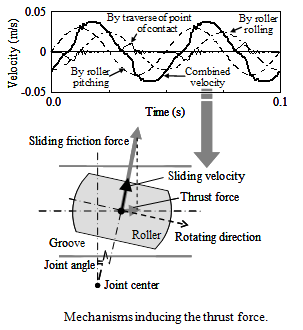
To determine the mechanisms inducing the thrust force of a tripod constant velocity joint, a detailed analysis focused on one roller is performed based on a multibody dynamics approach. By simulating contact and friction forces among multiple parts, it is clarified that the principal factor inducing the thrust force is the friction force based on three kind of sliding velocities between a roller and a groove.
Upper figure: Reprinted from J. Syst. Des. Dyn., Vol. 4, No. 6 (2010),
pp. 857-870, c 2010
The Japan Society of Mechanical Engineers.
Part II. Highlighted Papers
Review
-
pages 59-67
Makoto Kato and Chi-Han Lee
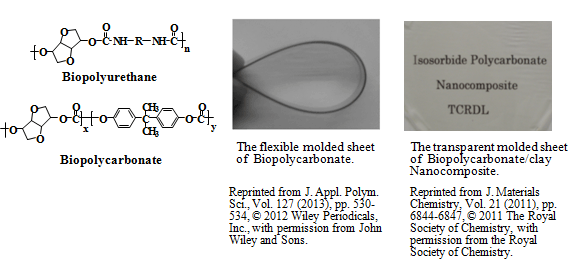
We have successfully synthesized biopolyurethanes and biopolycarbonates based on isosorbide. Furthermore, in the case of biopolycarbonates, we have succeeded in preparing nanocomposites consisting of biopolycarbonates and clay mineral. These biopolymers and nanocomposites exhibited excellent thermal properties and high moduli due to the rigid isosorbide. These properties make them attractive as high-performance materials.
Research Reports
-
8. Lattice Boltzmann Method for the Convection-diffusion Equation
 (1,001kB)
(1,001kB)pages 69-79
Hiroaki Yoshida and Makoto Nagaoka
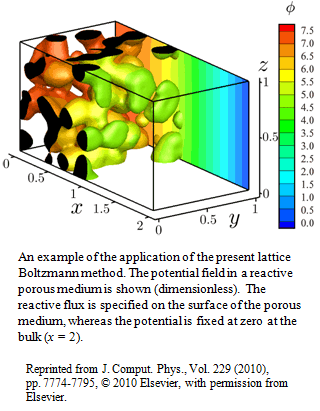
A lattice Boltzrnann method with a multiple-relaxation-time collision operator for the convection-diffusion equation is presented. The applicability of the present method to the anisotropic diffusion process is demonstrated by means of some numerical examples. A novel boundary treatment that improves the accuracy on complex boundaries is also described.
-
pages 81-92
Fumitaka Yoshizumi, Kazunori Yoshida, Takahiro Moroi, Shinji Tamano and Yohei Morinishi
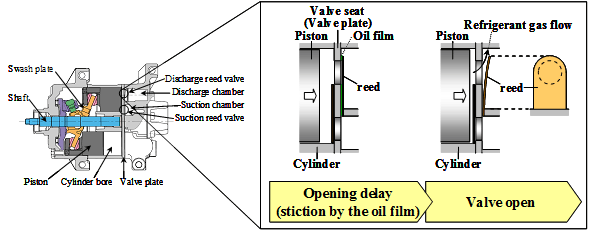
An experimental setup was developed to visualize the oil film between a reed and a valve seat and to simultaneously measure the reed deformation during the valve opening delay period due to the oil film. The results indicate an increase in the oil film thickness and cavitation occurrence in the oil film before the valve opens, and these occur earlier in a valve shape that realizes a shorter delay. -
pages 93-101
Riichiro Ohta, Itaru Gunjishima, Tomohiro Shimazu, Hisayoshi Oshima, Kazuma Shinozaki, Koichi Nishikawa, Tatsuya Hatanaka and Atsuto Okamoto
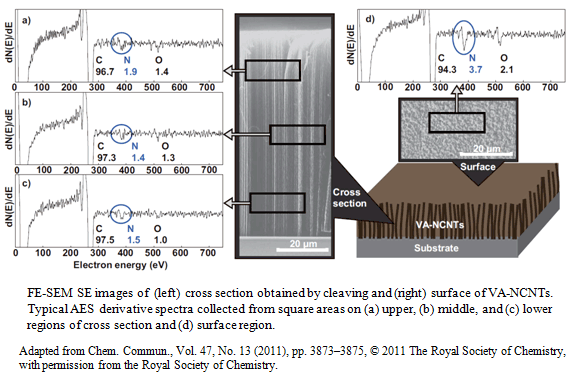
We propose two methods for functionalizing sidewalls of vertically aligned carbon nanotubes (VA-CNTs), which are capable of preserving the aligned morphology. The first method involves depositing Pt on CNT sidewalls, utilizing antisolvent precipitation of naphthalene. The second method involves nitrogenation of VA-CNTs by ultraviolet light pretreatment and reaction with ammonia gas.
